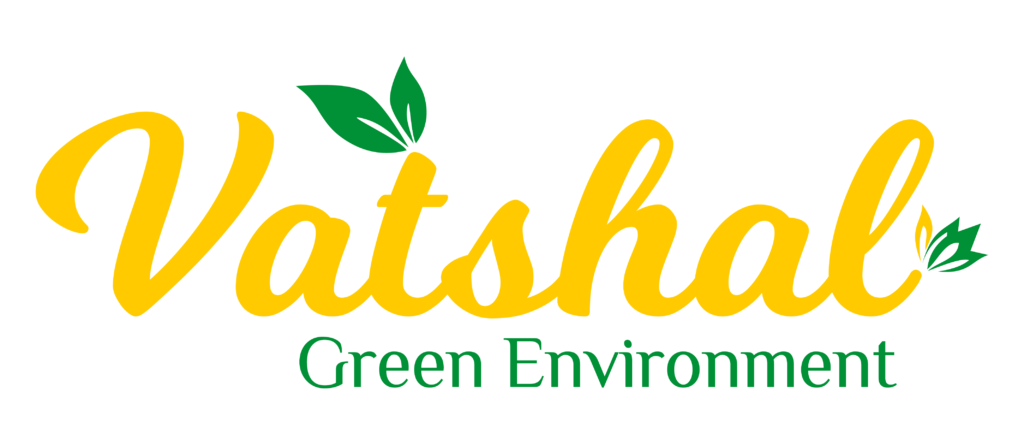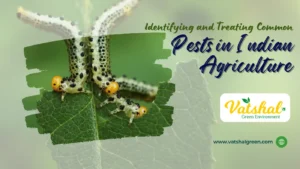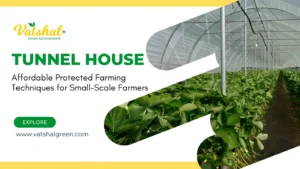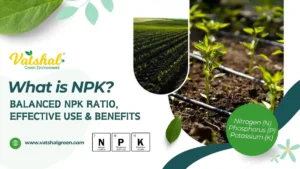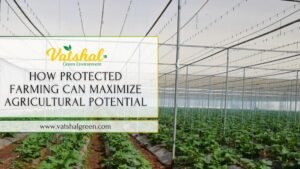Protected farming structures are revolutionizing the way we grow crops, offering enhanced protection from the elements, pests, and diseases while optimizing growing conditions. Vatshal Green Environment is at the forefront of this movement, providing a range of innovative solutions tailored to various agricultural needs. In this blog, we will explore different types of protected farming structures, their unique benefits, and how they contribute to sustainable agriculture.
Types of Protected Farming Structures
Flat Shade Net House
The Flat Shade Net House is an efficient structure designed with steel pipes that are hot-dip galvanized for durability. These houses are enclosed with agro-shade nets that allow the right amount of sunlight, humidity, and air to penetrate through the gaps. This setup ensures that crops are protected from harsh sunlight and excessive rain while maintaining an optimal growing environment.
Benefits:
- Protection from extreme weather conditions
- Reduced water evaporation, leading to water conservation
- Improved crop quality and yield
- Enhanced pest and disease control
Dome Shade Net House
Dome Shade Net Houses offer the same benefits as flat shade net houses but with an added aesthetic and ergonomic advantage. The dome-shaped design is not only visually appealing but also provides better airflow and sunlight distribution within the structure.
Benefits:
- Aesthetic appeal, ideal for urban and community gardens
- Improved structural stability against wind
- Enhanced microclimate control
- Easier movement and work inside the structure
Wire Rope Net House
For those seeking a more natural approach to farming, the Wire Rope Net House is an excellent choice. This structure uses organic methods to ensure chemical-free produce. Manure and vermicompost provide essential nutrients, while organic pesticides help control pests in kitchen and fruit gardens.
Benefits:
- Organic farming promotes health and environmental sustainability
- Enhanced soil fertility through natural composting
- Reduced dependency on chemical fertilizers and pesticides
- Better-tasting and safer produce
Hybrid Poly Net House
The Hybrid Poly Net House combines the best features of polyhouses and shade net houses. Its roof is covered with a poly film, while the sides are draped in shade net. This hybrid structure offers a perfect blend of both, making it versatile for various crops and climates.
Benefits:
- Optimal light diffusion for enhanced photosynthesis
- Superior temperature and humidity control
- Extended growing seasons
- Protection from pests and diseases
Low Cost Tunnel House
Low Cost Tunnel Houses are a budget-friendly solution for controlling climatic conditions inside. Made with transparent materials such as glass or plastic, these structures allow adequate sunlight exposure while protecting crops from adverse weather.
Benefits:
- Cost-effective solution for small-scale farmers
- Simple construction and maintenance
- Improved crop yield and quality
- Suitable for a wide range of crops
Climate Controlled Polyhouse
Our specialized Fan & Pad Polyhouse offers advanced climate control, making it perfect for high-value crops, tissue culture labs, and medicinal plantations. This structure provides better environmental control, regardless of whether the region is arid or non-arid.
Benefits:
- Precise temperature and humidity regulation
- Suitable for year-round cultivation
- Ideal for high-value and sensitive crops
- Increased productivity and profitability
Innovations in Protected Farming
While the above structures offer diverse benefits, the future of protected farming lies in continuous innovation. Here are a few emerging trends and technologies:
- Automated Climate Control Systems: Advanced sensors and automation systems can monitor and adjust environmental conditions in real-time, ensuring optimal growing conditions.
- Vertical Farming Integration: Combining protected farming structures with vertical farming techniques can maximize space utilization, especially in urban areas.
- Renewable Energy Solutions: Integrating solar panels and other renewable energy sources can make these structures more sustainable and reduce operational costs.
- Hydroponics and Aquaponics: These soilless farming techniques can be integrated within protected structures to enhance water efficiency and crop yield.
Contact Us
Vatshal Green Environment is dedicated to providing innovative and sustainable protected farming solutions. Whether you are a small-scale farmer or managing a large agricultural operation, our range of products can meet your needs. For more information, feel free to contact us.
Phone: (+91) 7874379887
Email: contact@vatshalgreen.com
Website: Vatshal Green Environment
By incorporating these advanced farming structures, you can ensure the sustainability and productivity of your agricultural practices, leading to healthier produce and a better environment.
